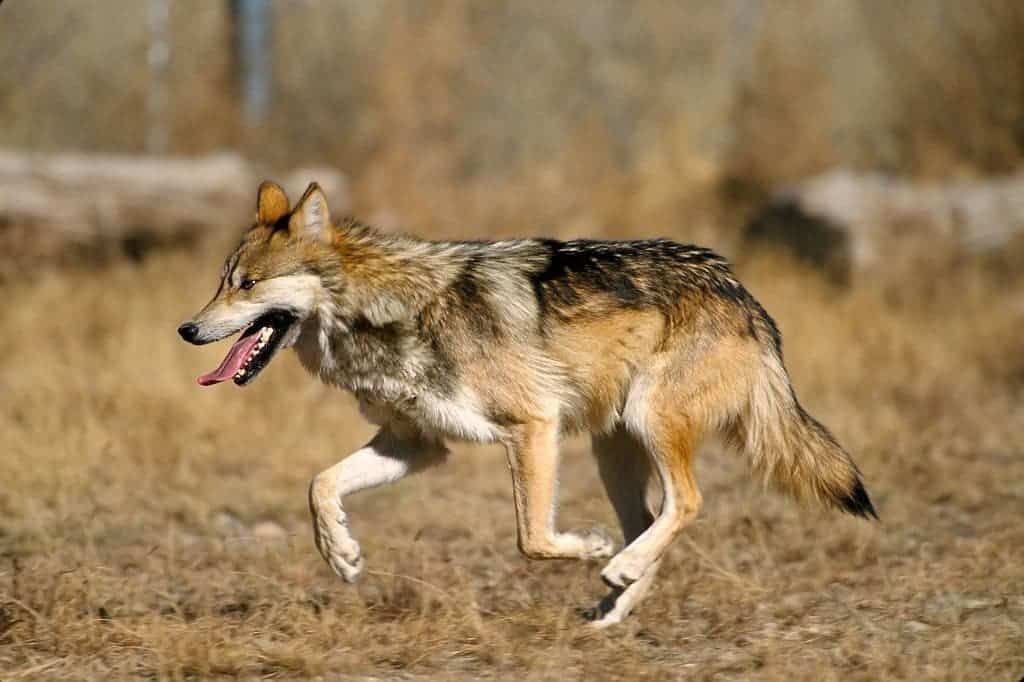Conservationists say ranchers aren’t playing their part in protecting their cattle, and blame the Fish and Wildlife Service for needlessly killing endangered wolves.

The Mexican wolf (Canis lupus baileyi), also known as the lobo, was once a highly regarded creature. In recent times, this gray wolf subspecies has been brought to the brink of extinction.
There are less than 200 in the wild, with a slightly higher number in captivity breeding programs. Ranchers aren’t happy with these conservation programs and have often been vocal in their desire to eliminate wolves from all ranching sites.
When ranchers complained to the U.S. Fish and Wildlife Service, problematic wolves were killed off.
“This killing spree shows us how little has changed in the mindset of wolf managers since the days of federal wolf extermination a century ago,” said Michael Robinson of the Center for Biological Diversity. “The Fish and Wildlife Service would rather shoot wolves than require ranchers to protect their animals on public lands. And sickeningly, some stockowners seem to look at losing cattle, and collecting reimbursements for those deaths, as worthwhile if it results in wolf killings that undermine Mexican gray wolves’ precarious recovery.”
The problem was revealed in three surreptitious memos that were written between March 3 and March 24. In the memos, the Fish and Wildlife Service writes that they killed three wolves as they were attacking local ranchers’ cattle.
But that might not be telling the full story.
“Killing critically endangered Mexican gray wolves has never been a credible recovery strategy, and today we dishearteningly learn that the USFWS will fall right back into it, despite years of collaborative science, education, and cooperative stewardship efforts to mitigate and prevent livestock losses,” said Kelly Burke, executive director of Wild Arizona. “Let’s get back on track and truly recover the lobo through meaningful science-based actions.”
It’s a new conflict, but an old storyline. Many ranches have routinely used state-contracted range riders to ward off wolves, but this isn’t a foolproof method to avoid all problems. Part of the problem comes from a subset of ranchers Chris Smith of WildEarth Guardians, an environmental non-profit group. This minority of ranchers recklessly graze cattle in areas where wolves are active. They also hire non-governmental trappers which put even more pressure on the pack. It is reported that the pack where the wolves were killed started attacking cattle only after this happened.
“It is absurd that the onus for coexistence is placed on these endangered, native wolves rather than on subsidized public-lands ranchers who have introduced cattle where they don’t belong,” said Chris Smith of WildEarth Guardians. “A subset of ranchers who would rather have native species killed than improve their livestock management is literally calling the shots for the U.S. Fish and Wildlife Service.”
Another problem is that Mexican gray wolves have a history of eating carcasses of cattle they did not kill (cattle that died of non-wolf causes). There are scientific recommendations advising ranchers to treat any carcasses of cattle that died with lime, so that wolves aren’t attracted to them. If this isn’t done, wolves will come and eat the carcass, encouraging them to eventually look for livestock to hunt. However, the Fish and Wildlife Service opposes making this guidance mandatory.
“Ranchers are allowed to graze their private livestock on public lands with so little accountability,” said Kirk Robinson of Western Wildlife Conservancy. “The wolves are the scapegoats, and lamentably, it puts their recovery at risk.”
It’s far from the first time something like this happened. In Washington, 26 gray wolves were killed in December, at the pressure of ranchers who say they are losing a lot of money due to wolves hunting their livestock.
“Seattle doesn’t ask us what to do with their homeless, and I don’t think we should have to ask Seattle what to do with our wolves,” said Bill McIrvin, a fourth-generation rancher in Washington.
“I don’t feel that we have room for wolves in Washington state,” said McIrvin, who said his family would continue to oppose what they see as a broader agenda of wolf advocates and officials.
The argument for wolves is that as predators, they can help restore the natural ecosystems in a healthy way, providing valuable environmental services. Also, if ranches are managed responsibly, especially with riders accompanying the cattle, there is very little risk of predation.
McIrvin says that “government-sponsored range riders … have never once protected a cow or a calf.” But that’s not the case, if you ask most people.
Jan Wright, who patrols ranches in Washington, works to deter wolves by hanging up cloth strips and carrying a gun that shoots whistle flares. She stresses that cattle carcasses must be removed, and she outfits all cattle with cowbells.
“When they wear bell collars, it sounds like the cavalry are coming,” Wright said. “The ranches that I’ve been riding for in the last few years have not had wolf kills.”
It’s a delicate issue, but it’s an issue for which solutions can be found if sought.
The 2017 Mexican Wolf Recovery Plan calls for reducing the numbers of wolves removed by the federal government, but there are no actual limits on killings.



